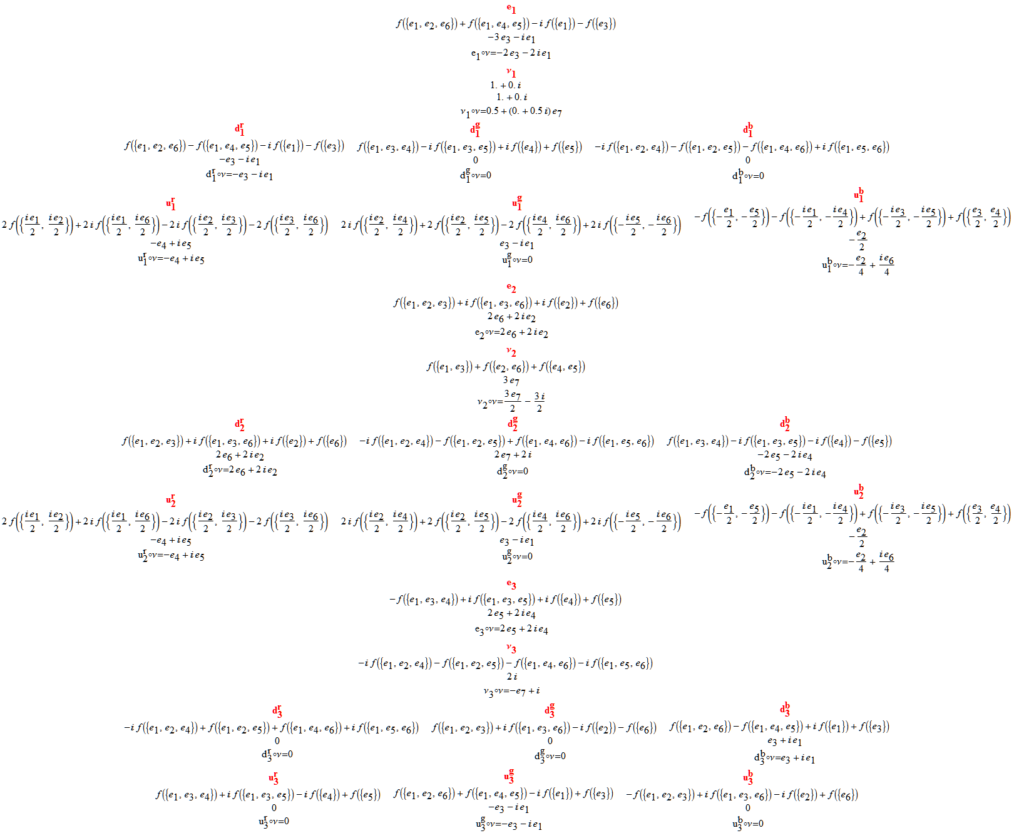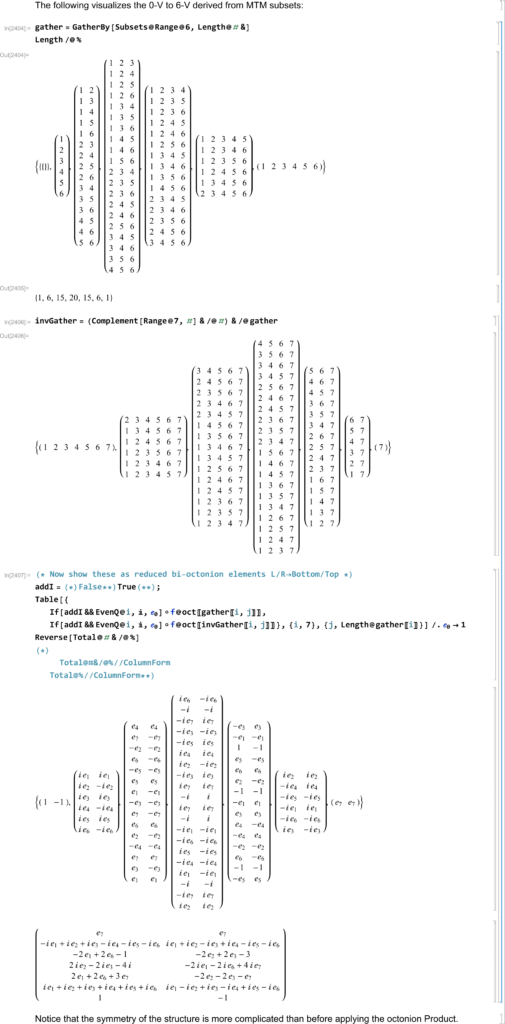I’ve updated an analysis I did on the work of Cohl Furey’s papers from several years ago. Since then, she added another paper: https://arxiv.org/abs/1910.08395v1
The short pdf version of my analysis (with some detail cells collapsed) is here (34 pages), and a longer version is here (no collapsed cells and 51 pages). These pdf’s are a direct output from my Mathematica (MTM) Notebook. I will follow up with a LaTex paper on the topic soon.
This notebook has code built in to operate symbolically on native MTM reals, complexes, and quaternionic forms, as well as my custom code to handle the octonions, and now the bi-octonions (which doesn’t assign the octonion e1 to be equivalent to the complex imaginary (I)). That change also applies to the native quaternion assignments where of e1=I, e2=J, and e3=K in order to work with quater-octonions. This was a fairly trivial change to make since it simply involves removing the conversion of complex (and quaternion) operators from being involved in the octonionic multiplication.
Please note that my previous analysis here (from Feb. 2019) made the mistake of not commenting out these operations. As such, it was operating on octonions (not complexified bi-octonions), so some of my concerns were resolved based on correcting that error.
The bottom line is that I did validate much of the work presented in the referenced papers, with the exception of some 3 generation SM charge (Q) assignments in that latest paper (Oct. 2019).
I am very interested here in the suggestion at the very end of that paper [5] in the Addendum Section IX(B/C) on Multi-actions splitting spinor spaces, Lie algebras/groups, and Jordan algebras. I suspect having the ability to create a machine (i.e. a symbolic engine such as MTM) to operate on and visualize these structures as hyper-dimensional physical elements is critical to making progress in understanding our Universe more thoroughly.
While I have had some success in replicating quark color exchange, as well as flavor changes (e.g. green u2 to d3 quark exchange using g13), there doesn’t seem to be a complete description of how to construct each of those color and flavor exchange actions from the examples given. So for reference I present all possible combinations of these actions across the particle/anti-particle definitions (see the image linked in the last paragraph of this post). This comment about limited examples also applies to replicating the 3 generation charge (Q) calculation using the sS constructs mentioned above.
I welcome any help or advice or additional examples.
Below is an example image of the 3 generation SM from the 2019 paper built from bi-octonions (with my octonion multiplication table reductions applied. The anti-particles (not shown) are simply the complex-conjugate of these. While I show in string form of Q, I am not showing the commutations based evaluations for them due to the questions / issues I have on how to get it to work.

The image below shows more detail of the 3 generation SM from 2014 with my code implementing the reductions. This leaves off the charge (Q) which was not defined as above in 2014 (AFAIK).

The image below shows a simple construction of the 0-V to 6-V splitting of the Mf Clifford algebraic structures, which I generated using MTM Subsets:

The rather large (long) image here checks all SM particle color and flavor changing actions and includes the anti-particles. The output is extensive and given my open questions on the formalism presented, the accuracy likely deviates from the intent of [5], but it is interesting to show how everything transforms. If no transform is found for a particular action, it outputs an * for that action. If a color or flavor changing transformation action is found, it identifies that action with the list of particles to which the transformation applies. Note: it only identifies a transformed particle if the source particle has a non-zero reduced value and the resulting match is exact (red) or a +/- integer factor of that particle (blue).
